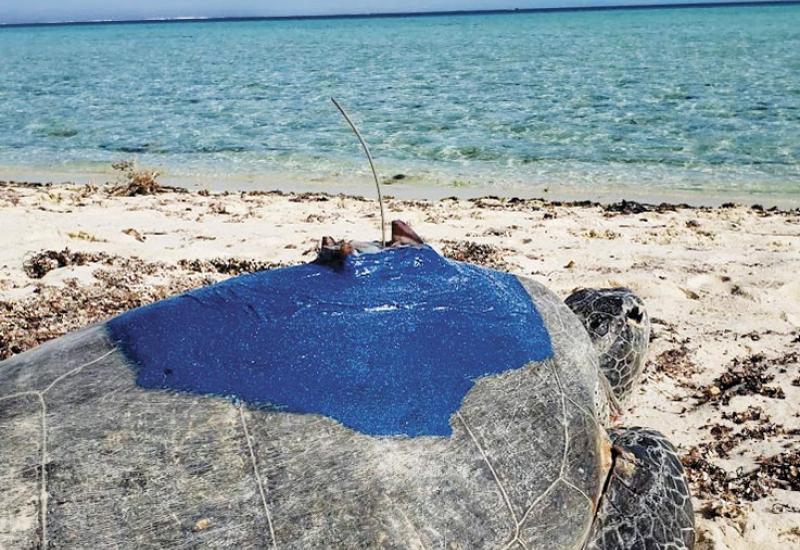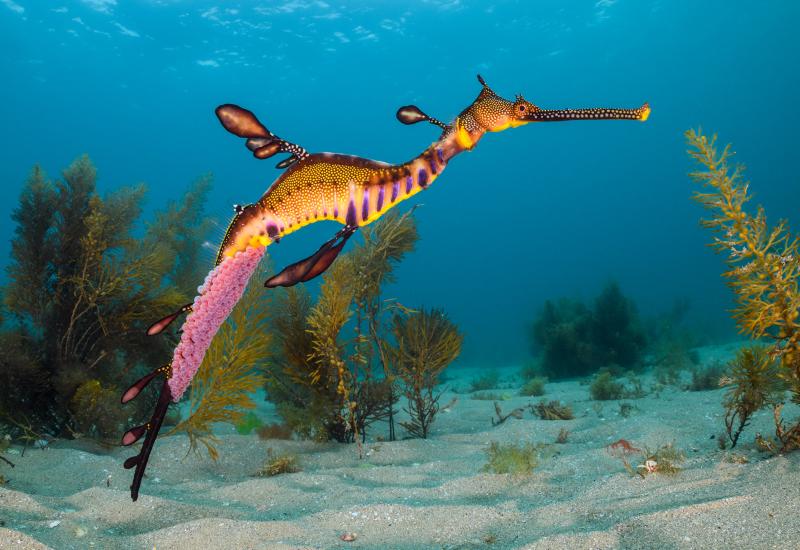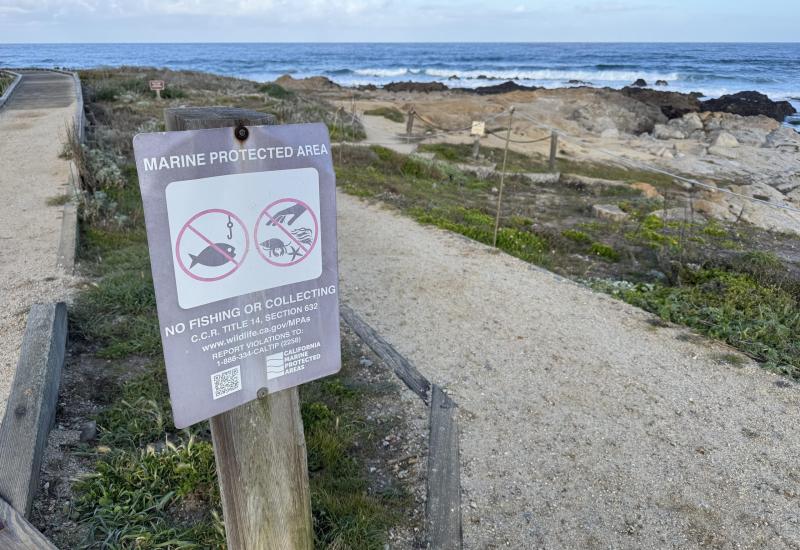50 Best Small Fish and Marine Animals in the Ocean
In a world with thousands of cool small marine animals, it was pretty dang tough choosing only 50! To help, we enlisted the services of Ned and Anna DeLoach, Eric Riesch and Paul Humann, a dynamic team that has spent years photographing and identifying animals on the world’s reefs. (Go to your bookshelf; you'll probably recognize their names from all your favorite marine ID books.) Without further ado, here's the top 50 small marine animaIs. Is your favorite little sea creature on the list?
Are you a fan of the ocean's biggest creatures? Check out our 36 Best Big-Animal Encounters photo gallery!

Eric RieschPygmy Seahorse (Hippocampus bargibanti)
There are seven described species of pygmy seahorses. They differ from bigger seahorses in that they only have one gill opening (on the back of the head).
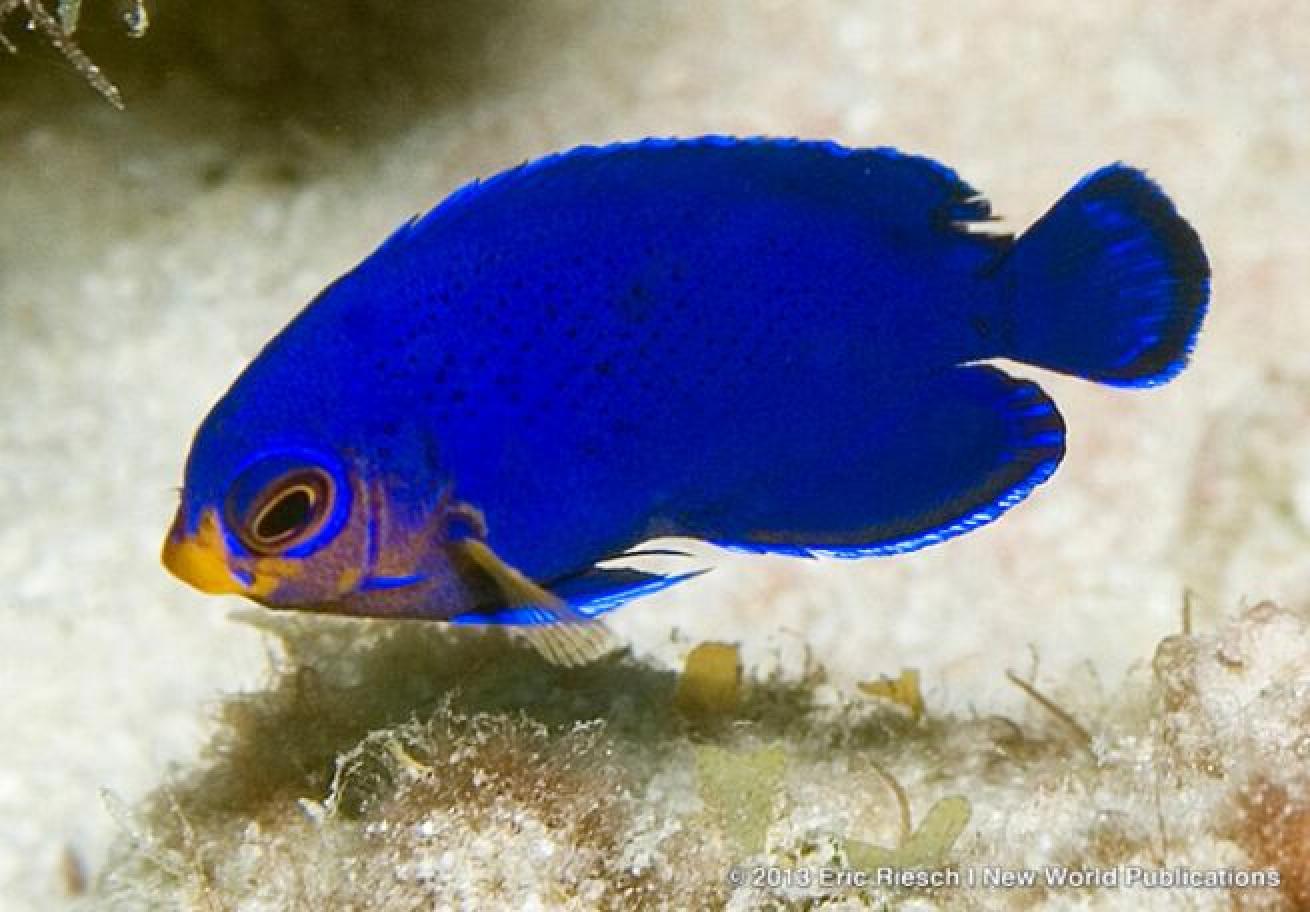
Eric RieschCherubfish (Centropyge argi)
At a max of 2 ½ inches, the Caribbean’s smallest angelfish is not to be missed. Unlike larger angels that roam a territory singly or in pairs, Cherubfish inhabit small territories in groups that can number from a few to over 50 fish. They can be a challenge to observe because of their wary nature.

Eric RieschFairy Basslet (Gramma loreto)
The color of this fish — neon purple contrasting with brilliant yellow — makes this one of the most noticeable fish on the reef. These little fish can often be seen drifting in small aggregations under overhangs or in small pockets in the reef.

Eric RieschRedlip Blenny (Ophioblennius macclurei)
This iconic blenny is great for fish watching because it is territorial and if disturbed, will reappear quickly on its favorite perch, ready to stare down nosy divers.

Ned DeLoachSailfin Blenny (Emblemaria pandionis)
Most commonly found in shallow, rubbly areas. In late afternoon, males put on quite a show, jumping and rapidly flicking sail-like dorsal fins to attract nearby females.

Eric RieschArrow Blenny (Lucayablennius zingaro)
Although it doesn’t look or behave like a typical blenny, this little fish shouldn’t be overlooked. Look for them hovering, with their tails cocked, among a cluster of Glass/Masked Gobies.

Eric RieschYellowhead Jawfish (Opistognathus aurifrons)
Found in small colonies in sandy and rubble near reefs. Their burrows, small architectural wonders, are built by excavating holes and lining them with rocks and shells for support – all done with their mouths.

Ned DeLoachPipehorse (Amphelikturus dendriticus)
A sort of intermediate between a seahorse and pipefish. A prized sighting, they are difficult to find hiding in grass and algae gardens.
Related Reading: Discovering Patagonia's Winged Comb Jelly

Ned DeLoachLined Seahorse (Hippocampus erectus)
Seahorses rank up with frogfishes in the popularity scale. If left undisturbed, they tend to remain in one area for a long time.

Paul HumannBrown Garden Eel (Heteroconger longissimus)
Now you see them; now you don’t. Living in colonies out in the sand, always partially entrenched in their burrows out in open sand, the pencil-thin eels sway in the currents, feeding on plankton.

Ned DeLoachJuvenile Warty Frogfish (Antennarius maculatus)
Also called the Clown Frogfish. One of the most commonly seen frogfish by divers, this juvenile is smooth and has not yet developed the characteristic skin bumps from which it gets its name.

Ned DeLoachOrnate Ghost Pipefish (Solenostomus paradoxus)
The female ghost pipefish broods her young in a modified pouch created by fused pelvic fins. In the other family of pipefishes, it is the male that broods the young.

Ned DeLoachPinkeye Goby (Bryaninops natans)
These one-inch wonders — with translucent bodies and bright-pink eyes — epitomize cute.
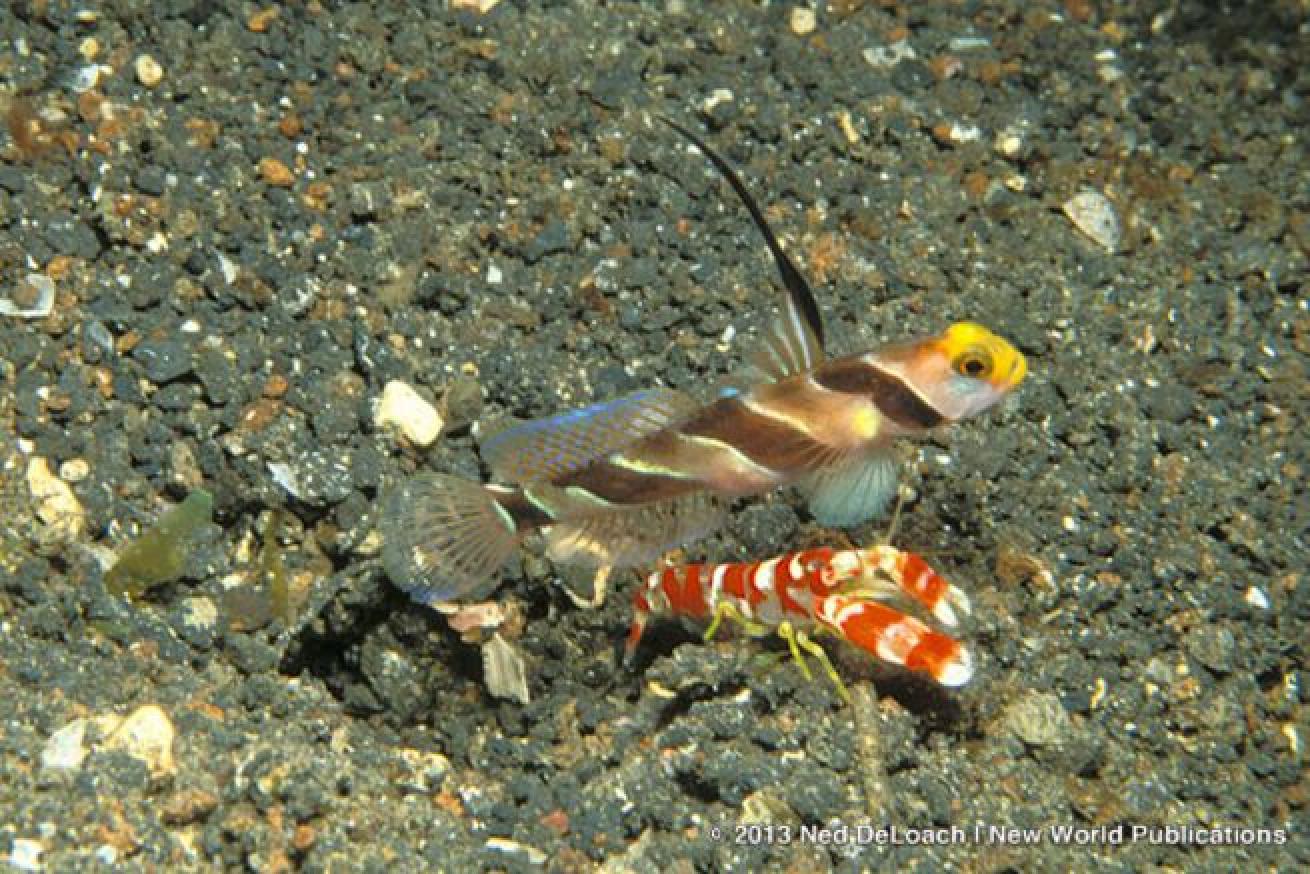
Ned DeLoachBlack-ray Shrimpgoby (Stonogobiops nematodes)
A partnership that pays big dividends: The shrimp digs and maintains a burrow while the goby serves as a sentry for the nearly blind shrimp.

Ned DeLoachMandarinfish (Synchiropus splendidus)
Although famous for their entertaining early evening courtship and spawning rituals, the secretive little fish can also be seen during the day darting in and out of the low-profile habitat they favor.

Ned DeLoachFire Dartfish (Nemateleotris magnifica)
Dartfish can be found hovering above small sand burrows where they dive when closely approached.

Ned DeLoachBanggai Cardinalfish (Pterapogon kauderni)
Once only known from their native Banggai Islands, these striking black and white patterned fish are now commonly seen in both Lembeh Strait and Bali, Indonesia, presumably introduced by humans. The male incubates eggs in his mouth and continues to carry them for 10 days after they hatch.

Ned DeLoachFilamented Flasher Wrasse (Paracheilinus filamentosus)
To entice females to mate, in the afternoon, flasher wrasse males put on one of the most colorful courtship displays in the ocean as they court their female harem.

Paul HumannScalefin Anthias (Pseudanthias squamipinnis) Anthias
Small sea basses, Anthias add vibrant splashes of color on the outer reef, throughout the Indo-Pacific.

Eric RieschFalse Clown Anemonefish (Amphiprion ocellaris)
Easy to approach and a bucket of fun to watch, clown fishes can be found living in association with anemones. The boldly patterned fish have developed an immunity to the stinging tentacles of their hosts.

Ned DeLoachSignal Goby (Signigobius biocellatus)
Sometimes called Crab-eyed Gobies, the little fish tend to bounce around the sandy bottom rather than swim. Pairs may often be found excavating burrows.

Ned DeLoachBarramundi - juvenile (Cromileptes altivelis)
A member of the grouper family, the striking polka-dotted youngster swims with a rapid undulating motion.

Eric RieschBluespotted Jawfish (Opistognathus rosenblatti)
Both beautiful and animated, this striking member of the jawfish family is worth a trip to the Gulf of California. Of the 60 or so species of jawfishes, the Bluespotted Jawfish are among the most colorful. They are known for their elaborate courtship rituals in which the males adopt a distinctive bicolor pattern and make spectacular jumps above their burrows to attract females.

Ned DeLoachBluebanded Goby (Lythrypnus dalli)
A brilliantly colored fish that can be found in rocky areas or among the spines of sea urchins. The female deposits eggs in a chamber where they are guarded by the male until they hatch.

Eric RieschOrangethroat Pikeblenny (Chaenopsis alepidota)
These elongate fish live in abandoned worm tubes on the bottom. Courting males become darker with striking orange throats. They perform courting jumps and displays, similar to those of the sailfin blennies and jawfishes.

Eric RieschChristmas Tree Worm (Spirobranchus giganteus)
It is hard to believe these are worms! All a diver sees are the animal’s intricate gill and feeding structures of the elongate segmented worms.

Paul HumannBanded Coral Shrimp (Stenopus hispidus)
This is one of several species of cleaner shrimp that are known to pick parasites off fishes. If you think you have seen this shrimp in the Caribbean and the Pacific, you are correct – it is a circumtropical species.

Ned DeLoachSquat Anemone Shrimp (Thor amboinensis)
Also known as “Sexy Shrimp” for their cute little behavior of shaking their bootys high above their heads.
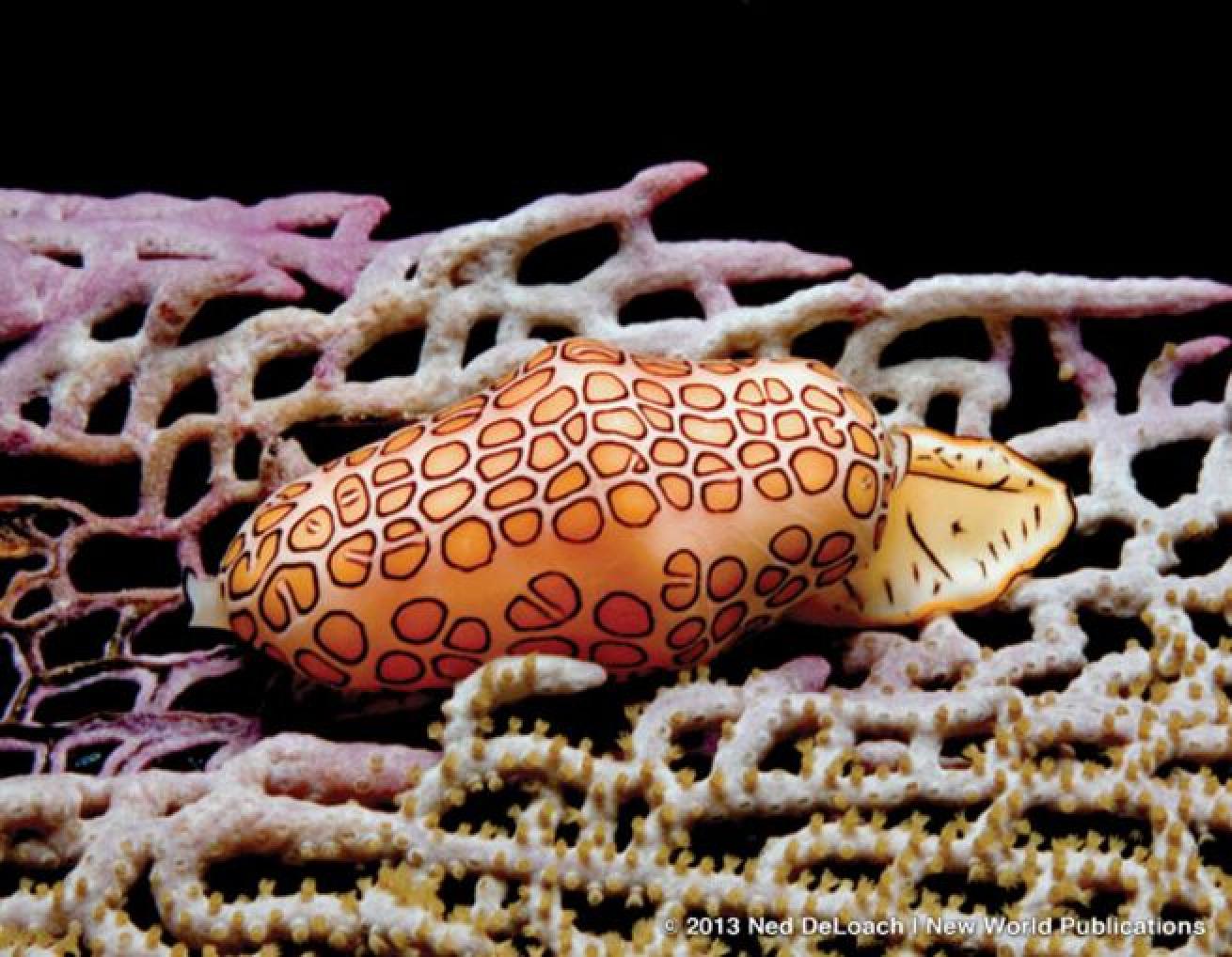
Ned DeLoachFlamingo Tongue (Cyphoma gibbosum)
This marine snail is normally found on gorgonians, including sea fans, on which it feeds. The colorful pattern is on its soft mantle, which it can retract, leaving a plain, creamy pink shell.
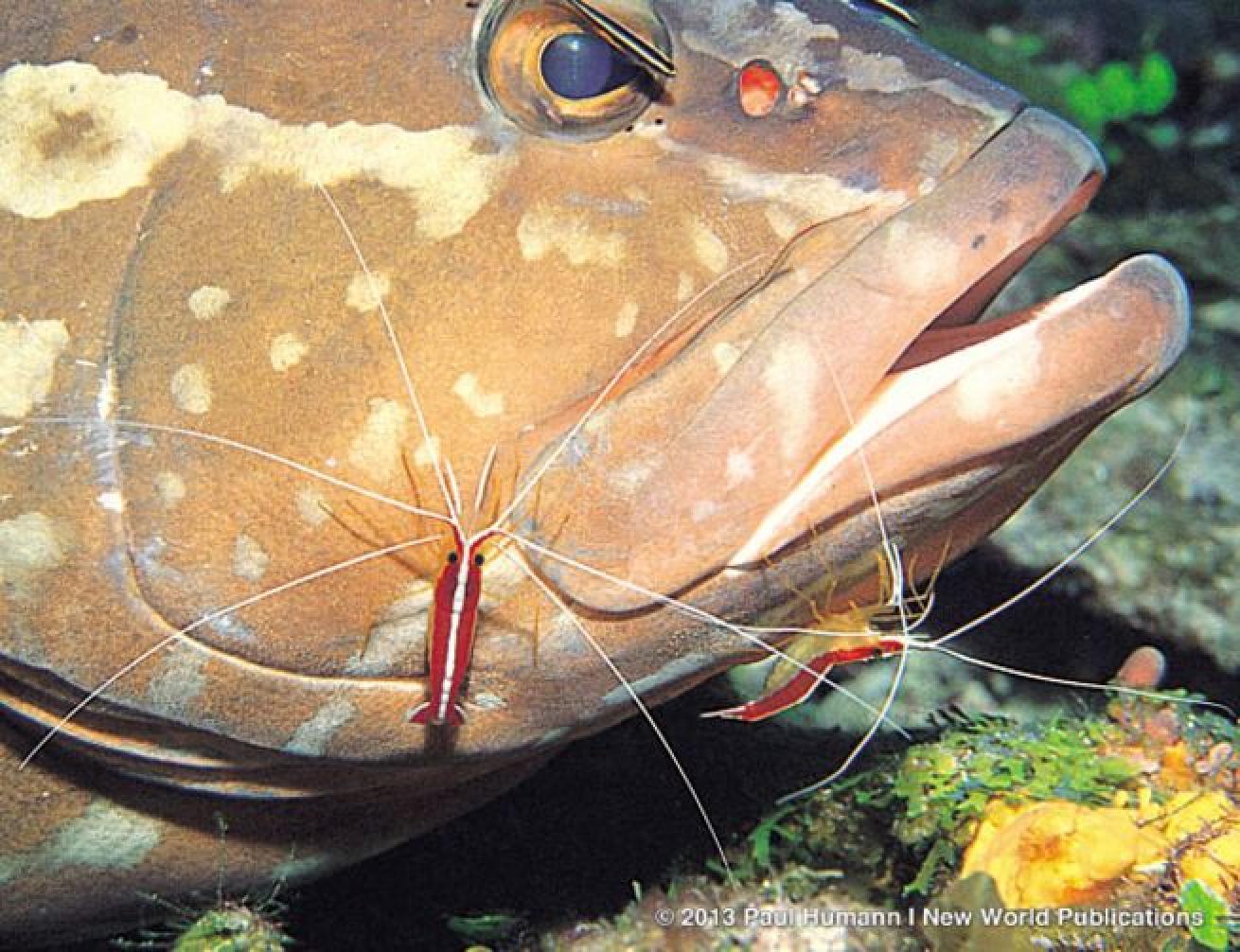
Paul HumannScarlet-striped Cleaning Shrimp (Lysmata grabhami)
A common but secretive species of cleaner shrimp that signals customers by waving their white antennae to attract passing fish.

Ned DeLoachBumblebee Shrimp (Gnathophyllum americanum)
Who would think that something so cute would make its living munching on the tiny tube feet of sea cucumbers and sea stars.
Related Related: 7 Liveaboards to Book if You Love to Learn

Ned DeLoachDecorator Crab
You’ve probably seen many decorator crabs without realizing it. They disguise themselves by attaching bits of sponge, algae, hydroids and other living animals from the reef to Velcro-like spines on their bodies. The best time to see them is at night when they venture out to feed.

Eric RieschCryptic Teardrop Crab (Pelia mutica)
This is a type of decorator crab that attaches bits of living sponge to its legs and body for camouflage.

Ned DeLoachOrange Ball Corallimorph (Corynactis caribbeorum)
You’ll have to venture out at night to see one of these beautiful relatives of sea anemones. But look quickly, they retract their clear tentacles rapidly when disturbed by light.

Ned DeLoachPersian Carpet Flatworm (Pseudobiceros bedfordi)
It is easy to understand how this exquisitely patterned flatworm got its common name.

Ned DeLoachSaron Shrimp (Saron sp.)
In addition to their spiked and bristled bodies, the nocturnal Saron shrimp have some of the most unusual combinations of color patterns – striped, dotted and flowered – often all on the same shrimp.

Ned DeLoachEmperor Shrimp (Periclimenes imperator)
Not only beautiful but smart, the shrimp hitch rides on slow-moving sea cucumbers and nudibranchs, picking food from the bottom sediment as they go.

Ned DeLoachHairy Squat Lobster (Lauriea siagiani)
The squat lobsters is not actually a lobster — it is a crab that belongs to the group Anomurans. The only place the pink and violet Hairy Squat Lobster can be found is on the convoluted surface of Giant Barrel Sponges.

Ned DeLoachSkeleton Shrimp sp. (Caprella sp.)
These would be scary critters if they weren’t so small. At less than an inch long, skeleton shrimp are found in groups numbering from a few to thousands. They inhabit a variety of organisms including hydroids, gorgonians, sponges and even sea stars and some bottom-dwelling fishes. Look carefully – what looks like a fuzzy mass is newly hatched juveniles that continue to cling to their mother for days after hatching.

Ned DeLoachBrown-lined Paperbubble (Hydatina physis)
Found circumtropically, this exquisite Brown-lined Paperbubble is classified as a sea slug. Usually only seen out feeding at night, they can rapidly bury into the sand if disturbed.

Ned DeLoachSpanish Dancer (Hexabranchus sanguineus)
The Spanish Dancer is one of the largest nudibranchs. When escaping danger, it can swim into the water column with an undulating motion. Emperor Shrimp are occasionally found living commensally with them.
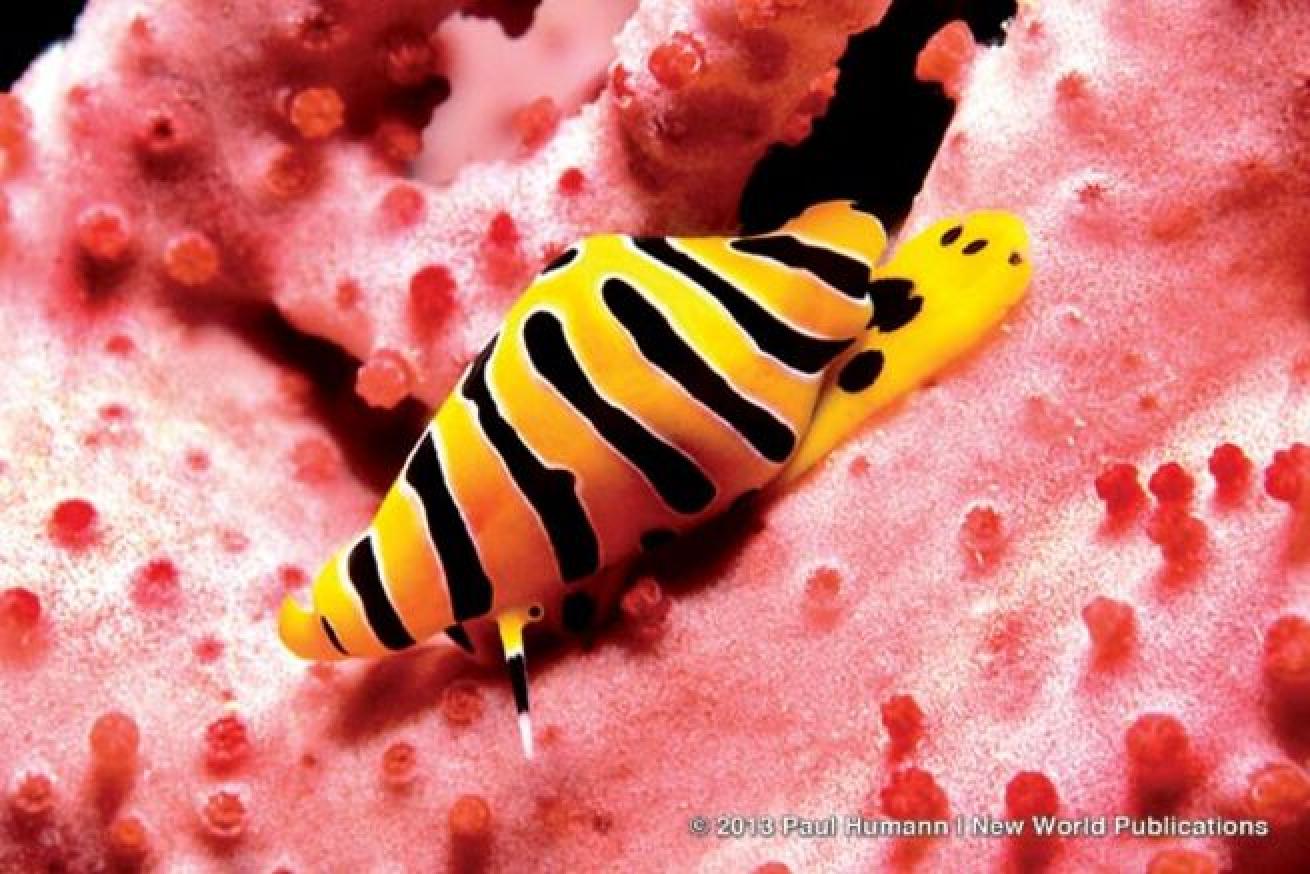
Paul HumannTiger Egg Cowrie (Cuspivolva tigris)
Egg cowries are sea snails in the family of ovulids that are found on soft corals and gorgonians, on which they feed. The drab shell of the Tiger Egg Cowrie is covered by a spectacularly patterned black and yellow mantle, which makes it one of the most sought-after species.
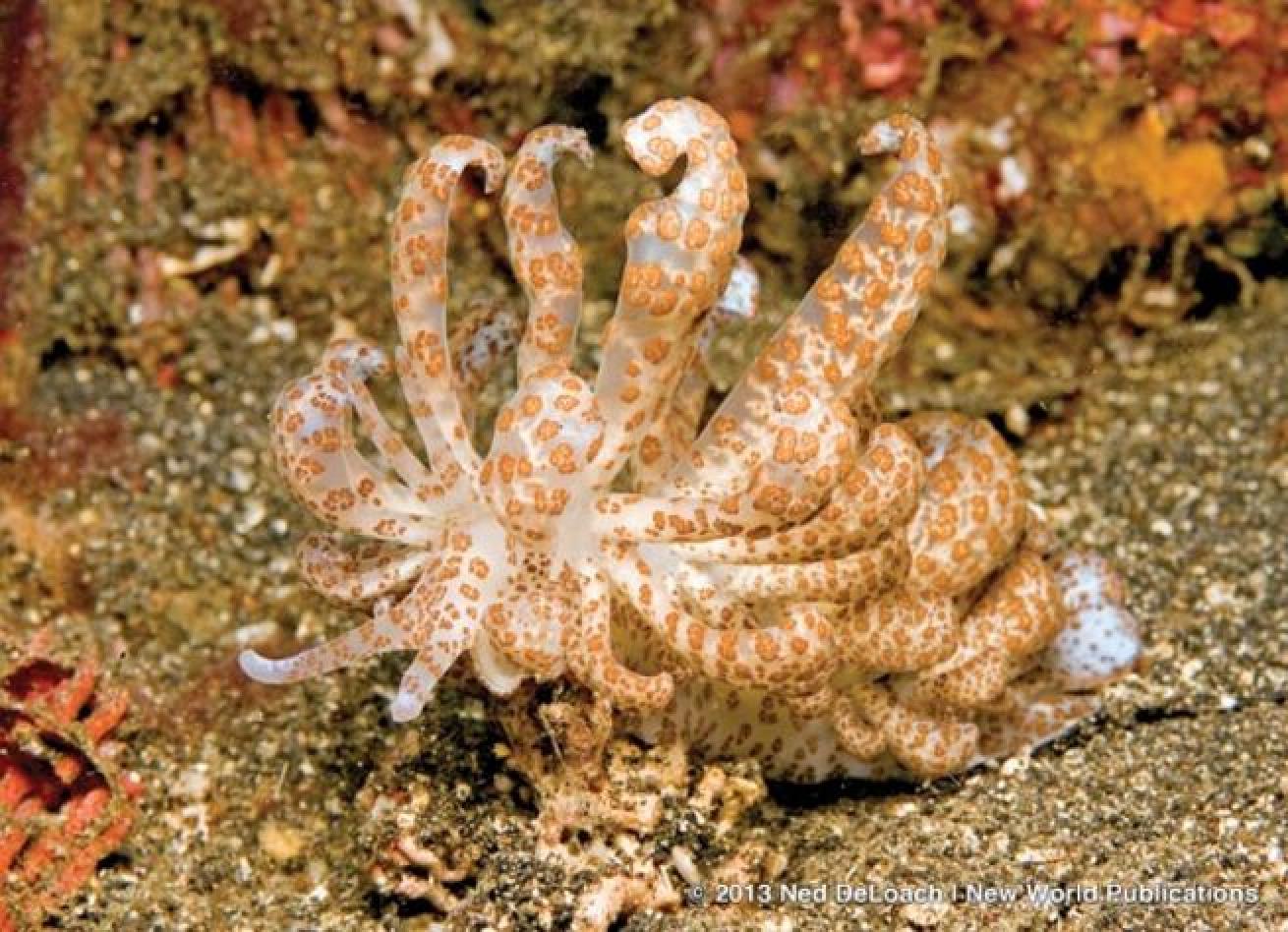
Ned DeLoachSolar-powered Nudibranch (Phyllodesmium longicirrum)
The Solar-powered Nudibranch is the largest in the group of nudibranchs that have a symbiotic relationship with photosynthetic zooxanthellae (single-celled algae) that live in its tissues and produce energy from sunlight.

Ned DeLoachFlamboyant Cuttlefish (Metasepia pfefferi)
Unlike other cuttlefish, the Flamboyant Cuttlefish moves by walking around the bottom – it lacks the ability to remain buoyant. Research by scientists found that their tissue is toxic and the toxin is as lethal as that of a Blue-ringed Octopus.
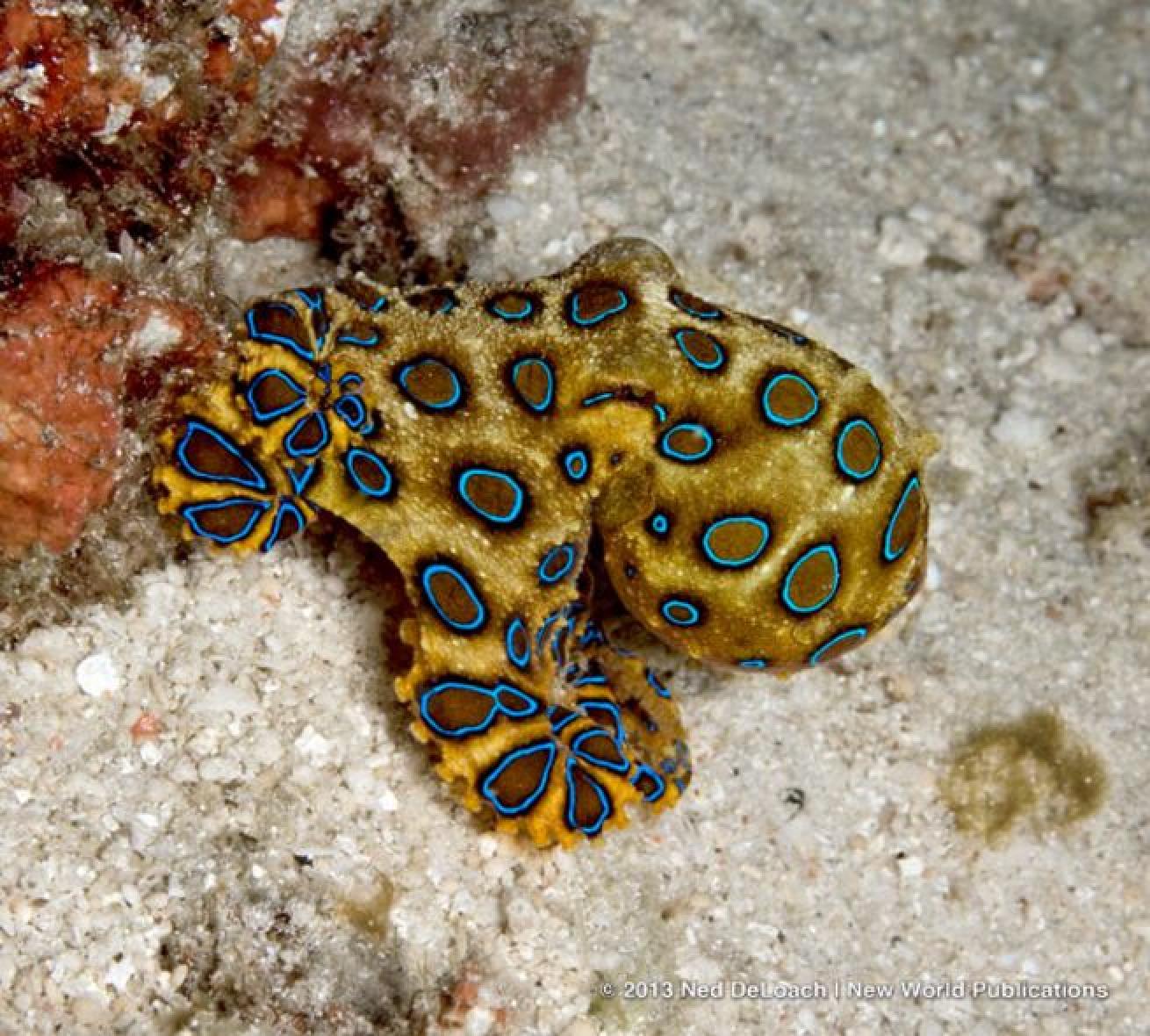
Ned DeLoachBlue-ringed Octopus (Hapalochlaena lunulata)
Most divers who see a Blue-ringed Octopus for the first time are surprised at how small they are – about 2 inches long with arms extended. When stationary, they can mute their colors and blend in very well with their surroundings. When alarmed or excited, they can flash brilliant blue rings.

Ned DeLoachHairy Octopus (Octopus sp.)
The “Holy Grail” of octopuses, this rarely seen, tiny species has yet to be scientifically described. The “hair” is actually skin filaments.

Eric RieschOrangutan Crab (Oncinopus sp.)
These decorator crabs, covered with fine reddish filaments, are often found living on Bubble or Mushroom Coral.
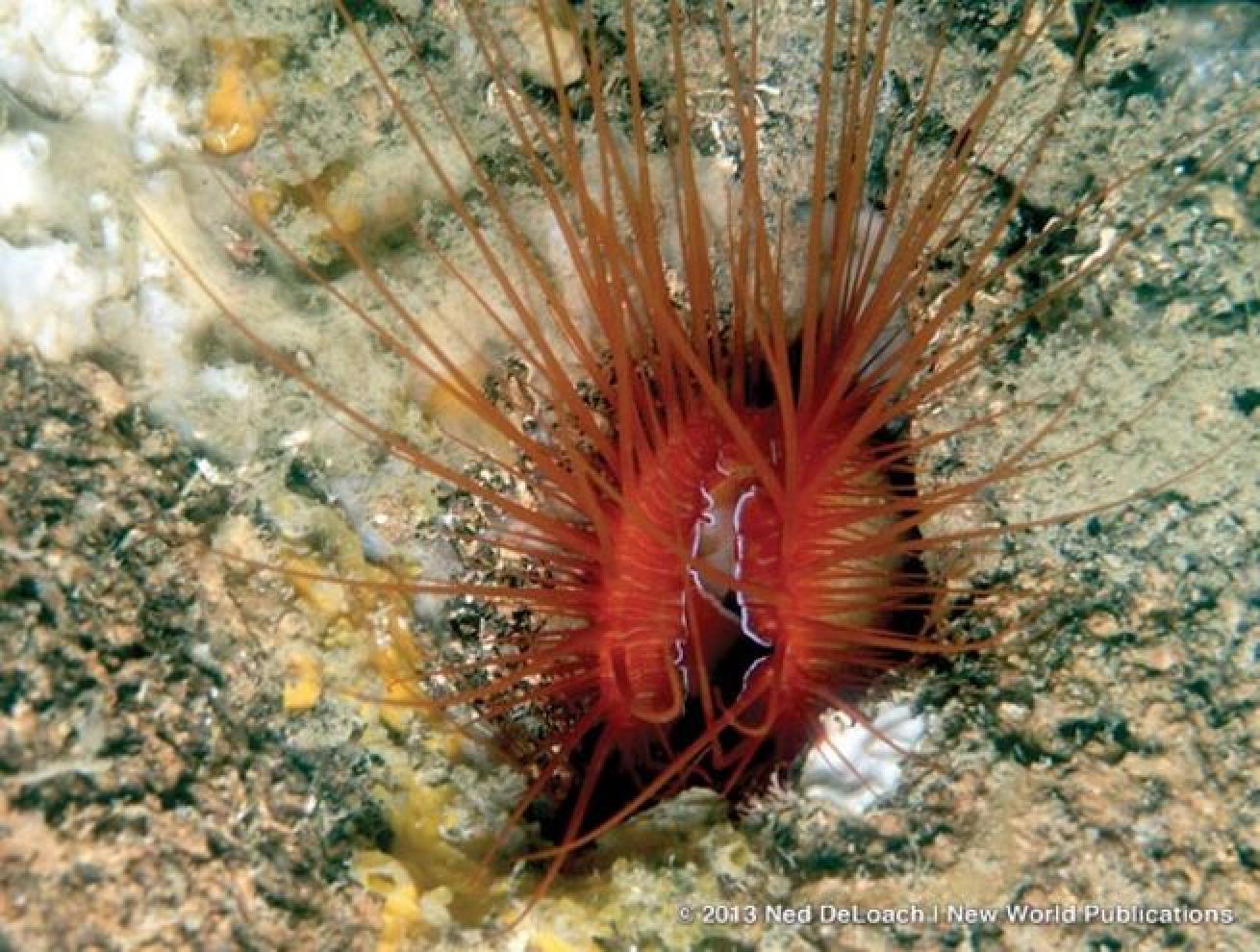
Ned DeLoachElectric Fileclam (Ctenoides ales)
Sometimes called the Disco Clam, this bivalve is not electric or bioluminescent. The edge of its mantle is iridescent and the light show occurs when light hits it.

Ned DeLoachBoxer Crab (Lybia tessellata)
It can take a lot of rock turning to find one of these small crabs. Carrying a small living anemone on each claw, they swing them in a motion reminiscent of a boxer, to capture food particles.

Ned DeLoachHarlequin Shrimp (Hymenocera picta)
Harlequin Shrimp feed on sea stars. A pair of shrimp will work together to subdue a sea star (that is often many times the size and weight of the shrimp), by loosening its tube feet from the substrate, flipping it over on its back so it can’t escape then dragging it off to be consumed in a nearby lair.

